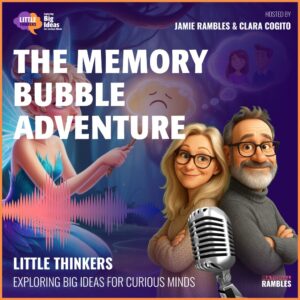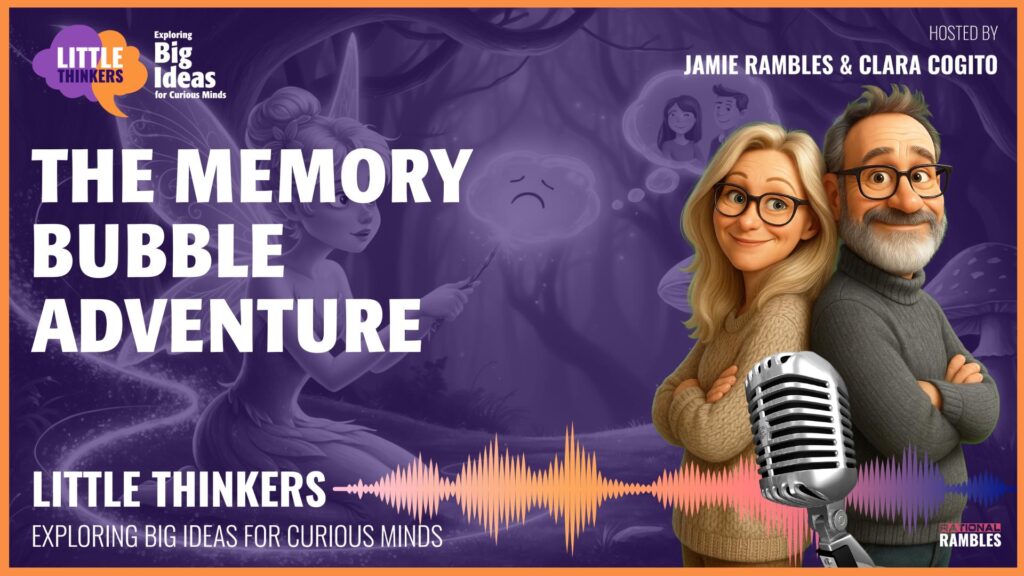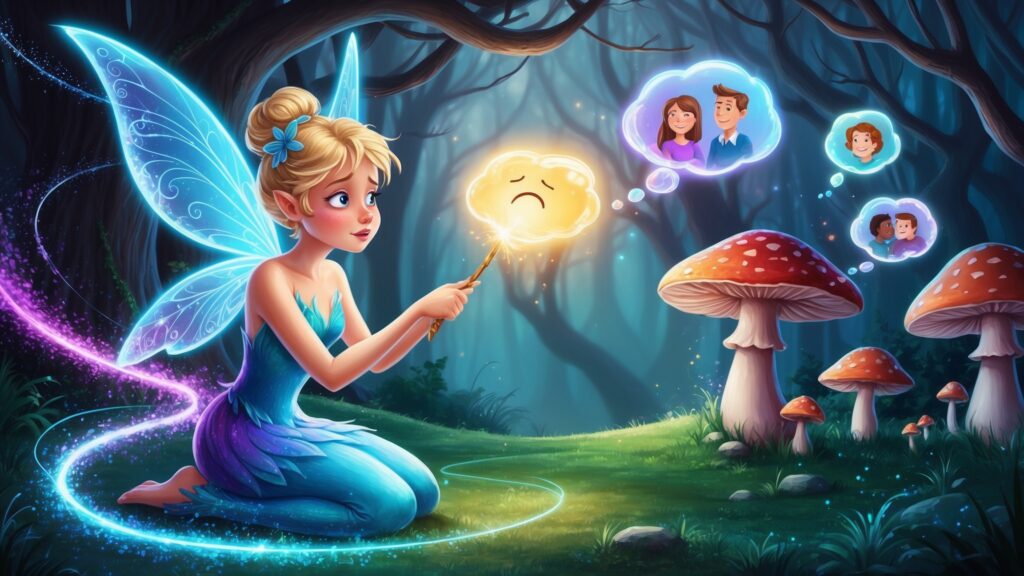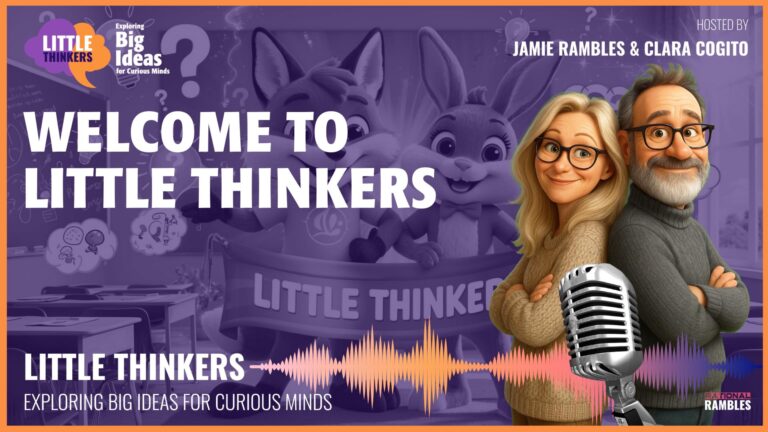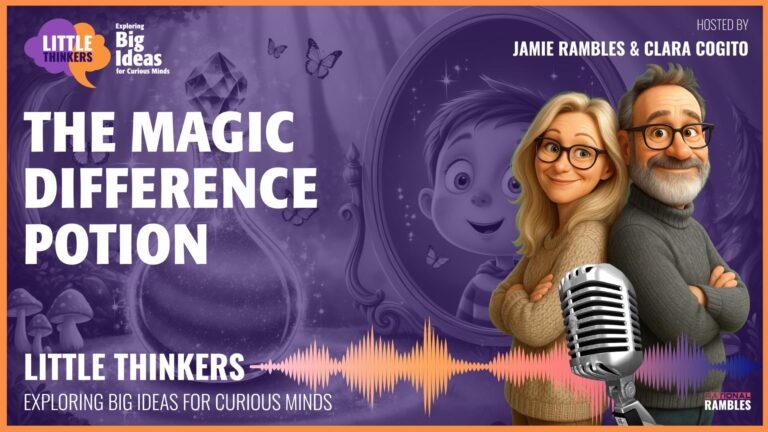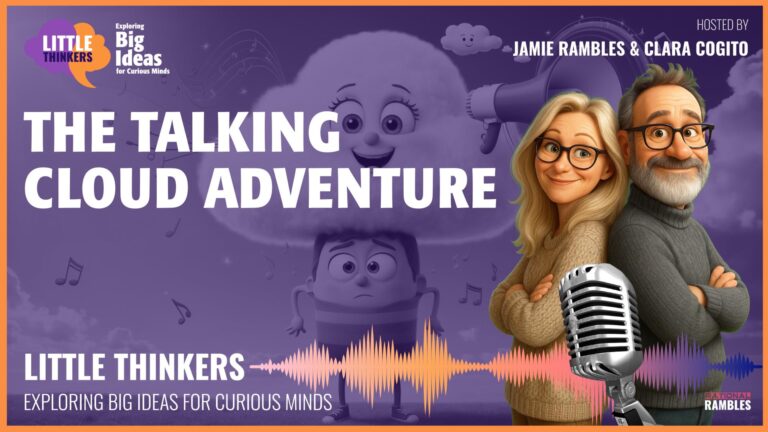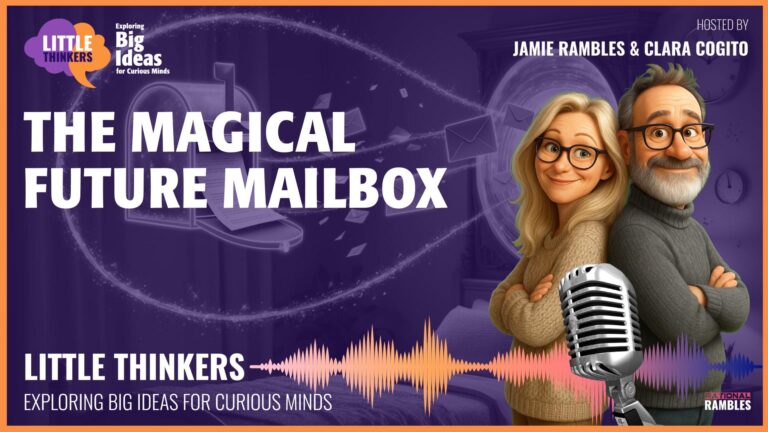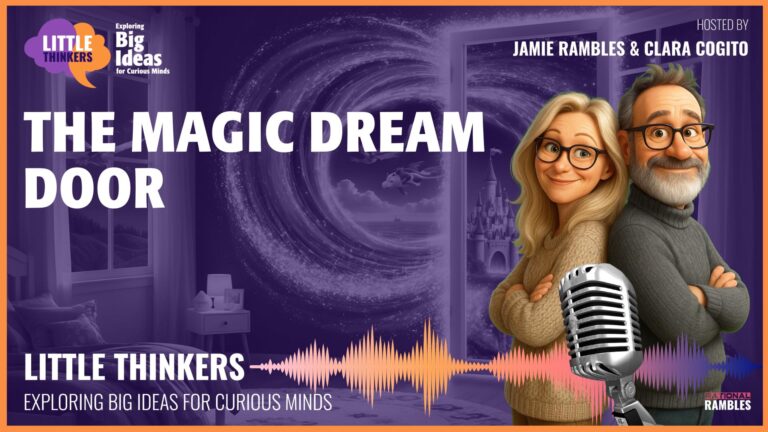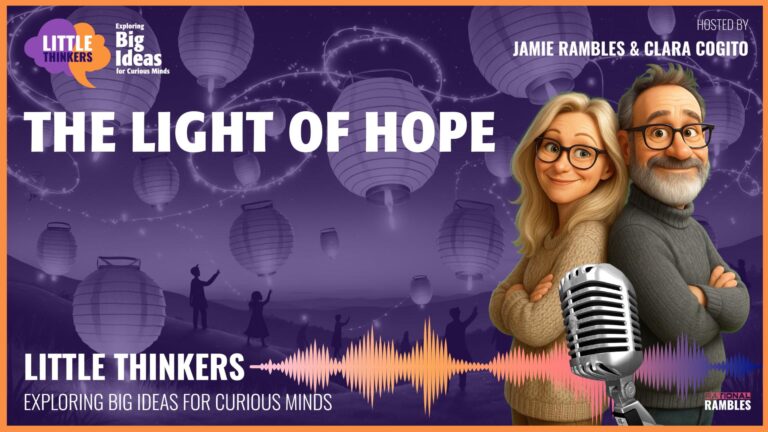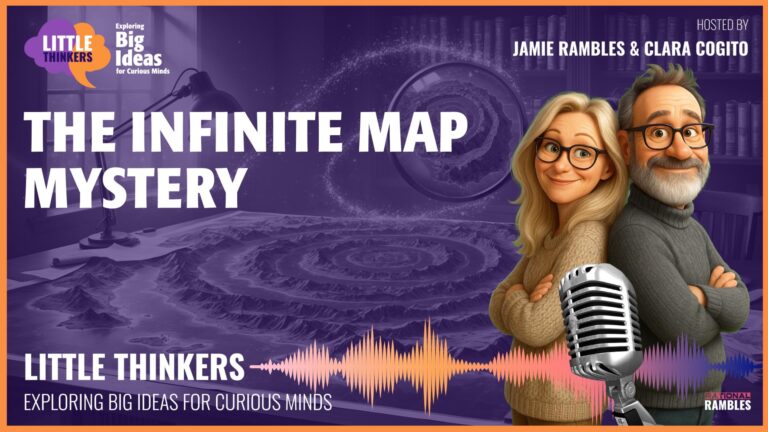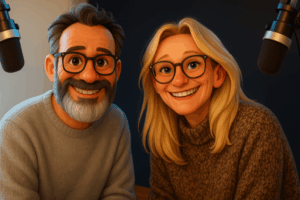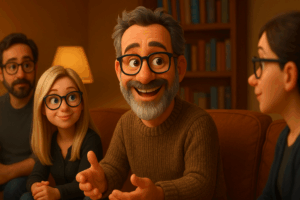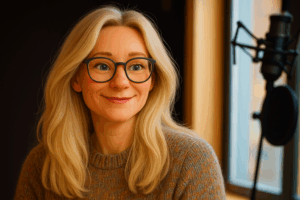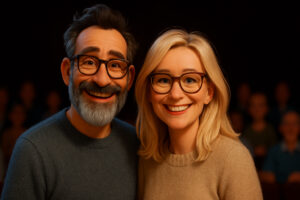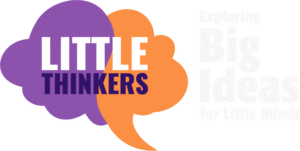The Memory Bubble Adventure: Why We Need Our Happy AND Sad Memories
What if you could erase your bad memories?
Imagine meeting a magical fairy who says, “I can make any memory you don’t like disappear forever!” Would you let the fairy take away the time you fell off your bike? Or when you lost your favorite toy? Or when you felt really scared on your first day of school?
This magical power would be called a “Memory Bubble” – like a sparkly soap bubble that could catch your unhappy memories and float them away into the sky, never to return!
Sounds amazing, right? But wait… is erasing our bad memories really a good idea? Let’s go on an adventure to find out!
The mixed-up memory smoothie
Think about your favorite memories – playing with friends, birthday parties, cuddles with your pet. Now think about some not-so-happy memories – falling down, feeling nervous, or saying goodbye to someone.
All these memories – the happy ones AND the not-so-happy ones – mix together like ingredients in a smoothie! They can’t really be separated once they’re blended together.
It’s like when you mix play-dough colors together. Once the blue and yellow become green, you can’t pick out just the blue bits anymore. Our memories work the same way!
Memory Test: Think about it!
Remember when you learned to ride a bike? You probably fell a few times (ouch!). But now you can zoom around without training wheels! If the Memory Bubble fairy took away those “falling down” memories, would you still know how to ride a bike?
How tough memories make us stronger
Did you know that when you go through something difficult, your brain actually grows stronger? It’s true!
When you fall and scrape your knee, it hurts a lot at first. Then it forms a scab. When the scab falls off, your skin in that spot is actually stronger than before! Our brains work in a similar way with tough memories.
Brain muscles need exercise!
Every time you face something scary or hard, and then get through it, your brain is building new connections – like tiny pathways between brain cells. It’s like your brain is exercising its muscles and getting stronger!
For example, maybe you were scared of the dark when you were younger. Each time you were brave and faced that fear, your brain got a little stronger. Now, you understand that shadows are just light playing tricks, and the dark isn’t so scary anymore.
The missing puzzle piece problem
Our memories fit together like puzzle pieces to create the whole picture of who we are. If we took away some pieces, the picture wouldn’t make sense anymore!
If the Memory Bubble fairy erased your memory of losing your favorite teddy bear, you might also forget how HAPPY you felt when you found it again. The sad part and the happy part are connected!
Think about your favorite books or movies. They usually have some sad, scary, or difficult parts, right? If we took those parts out, the happy ending wouldn’t feel nearly as special!
Try this thought experiment:
Imagine your favorite story with all the hard parts removed:
- Cinderella without the mean stepmother
- Finding Nemo without Nemo getting lost
- The Lion King without the sad part (you know which one!)
Would these stories be as exciting or meaningful? The challenging parts make the happy endings much more special!
Turning down the volume instead of erasing
Sometimes memories can feel TOO big or scary. Instead of erasing them completely, what if we could just make them quieter?
Good news! Our amazing brains can actually do this! When we talk about scary or sad memories with people we trust, those memories often become less frightening over time. It’s called “processing” the memory.
It’s like when you tell a parent about a nightmare you had. Just by talking about it, the nightmare usually becomes less scary. Your brain has its own special magic – no fairy needed!
The backpack trick
Think of your memories like things you carry in a backpack. If everything is stuffed in all wrong, the backpack feels heavy and hurts your shoulders. But if you rearrange everything carefully, you can carry the exact same things much more comfortably!
We don’t need to take things out of the backpack (erase memories). We just need to learn better ways to carry them.
When memories feel too heavy
Sometimes people have memories that feel too big or too scary to handle alone. That’s completely OK! There are special helpers called therapists whose job is to help both kids and grown-ups with overwhelming memories.
Sharing difficult memories with someone you trust is like turning on a light in a dark room. Everything becomes easier to see and less scary.
Remember: Feeling ALL your feelings – the happy ones AND the hard ones – is what helps you become more YOU!
Wondrous fact!
Scientists who study brains discovered that when we work through tough experiences, our brains literally grow new connections between cells. Your brain is redesigning itself to be stronger and smarter each time you face a challenge!
The memory of lost pets
Losing a pet is one of the saddest things many children experience. It hurts our hearts so much. Would it be better if the Memory Bubble fairy took away our memory of our pet dying?
If she did, we might forget everything about our special animal friend – the funny things they did, how they made us smile, and how much we loved them.
Even though remembering can make us feel sad, it also lets us keep all the happy memories of our time together. We can create memory books with pictures, tell stories about funny things they did, and keep our pet alive in our hearts.
Your story needs all its pages
Think of your life like a storybook. Each memory – happy, sad, scary, or silly – is like a page in your book. If we tore out some pages, the story wouldn’t make sense anymore!
The “dragon” parts (the scary or sad times) help make the “treasure” parts (the happy, wonderful times) feel even more special.
Every experience you have shapes who you are and who you will become. Even the rainy days help the flowers in your garden grow!
Memory Garden Activity
Imagine your memories as a beautiful garden. The happy memories are like colorful flowers, and the challenging memories are like the rain that helps everything grow. Both are needed for a healthy garden!
What would you plant in your memory garden today? What memory “seeds” might grow into something beautiful later on?
What would you tell the Memory Bubble fairy?
If you met the Memory Bubble fairy tomorrow, what would you say? Would you ask her to take away any memories? Or would you thank her but keep all your memories – both the sunny ones AND the rainy ones?
There’s no wrong answer – it’s your story! But remember that your brain is incredibly smart and designed to learn from ALL kinds of experiences.
Perhaps instead of a Memory Bubble fairy, what we really need is a Memory Hug fairy – someone who helps us hold our difficult memories with kindness until they don’t hurt so much anymore.
So the next time you feel sad or scared about something that happened, remember that these feelings are helping your brain and heart grow stronger. You’re becoming braver, kinder, and more understanding with every memory you make!
Your amazing, growing brain
Your brain is the most incredible thing in the universe! It’s always learning, growing, and making new connections. Every experience you have – both the fun ones and the challenging ones – helps your brain become even more amazing.
So maybe we don’t need Memory Bubbles after all. What we need is courage to feel all our feelings, trusted people to talk to when memories feel too big, and the understanding that every part of our story matters.
What do you think? Would you keep all your memories? Or would you put some in a Memory Bubble? It’s your wonderful brain and your incredible story!
